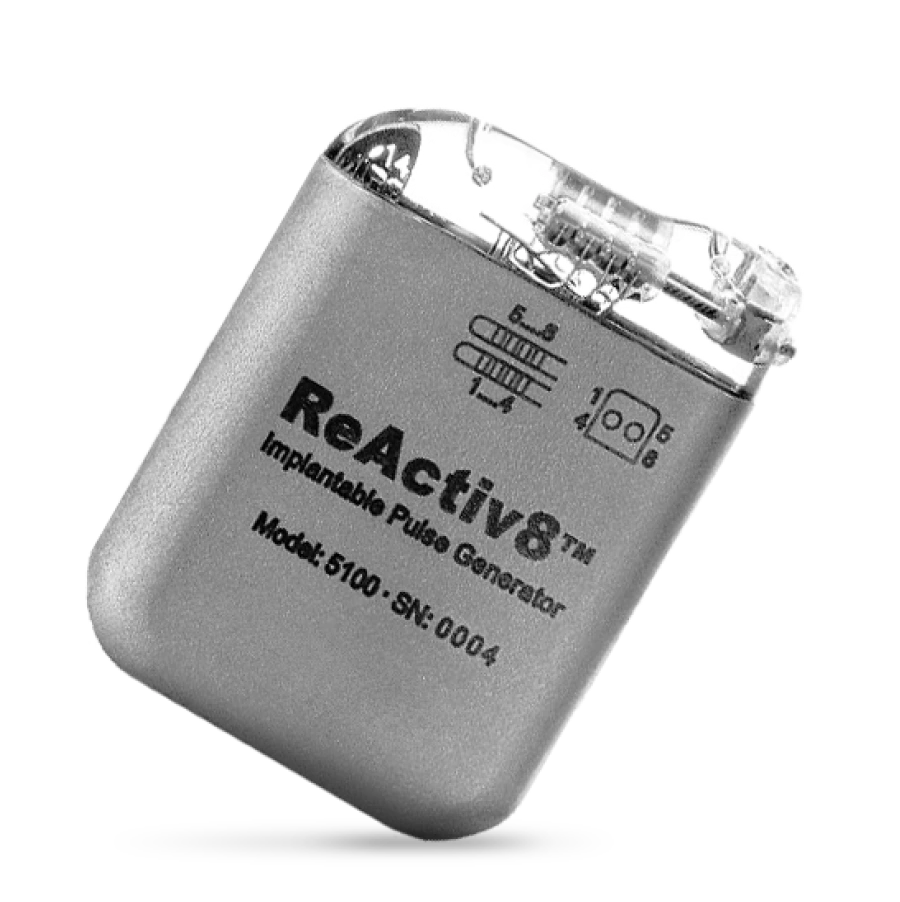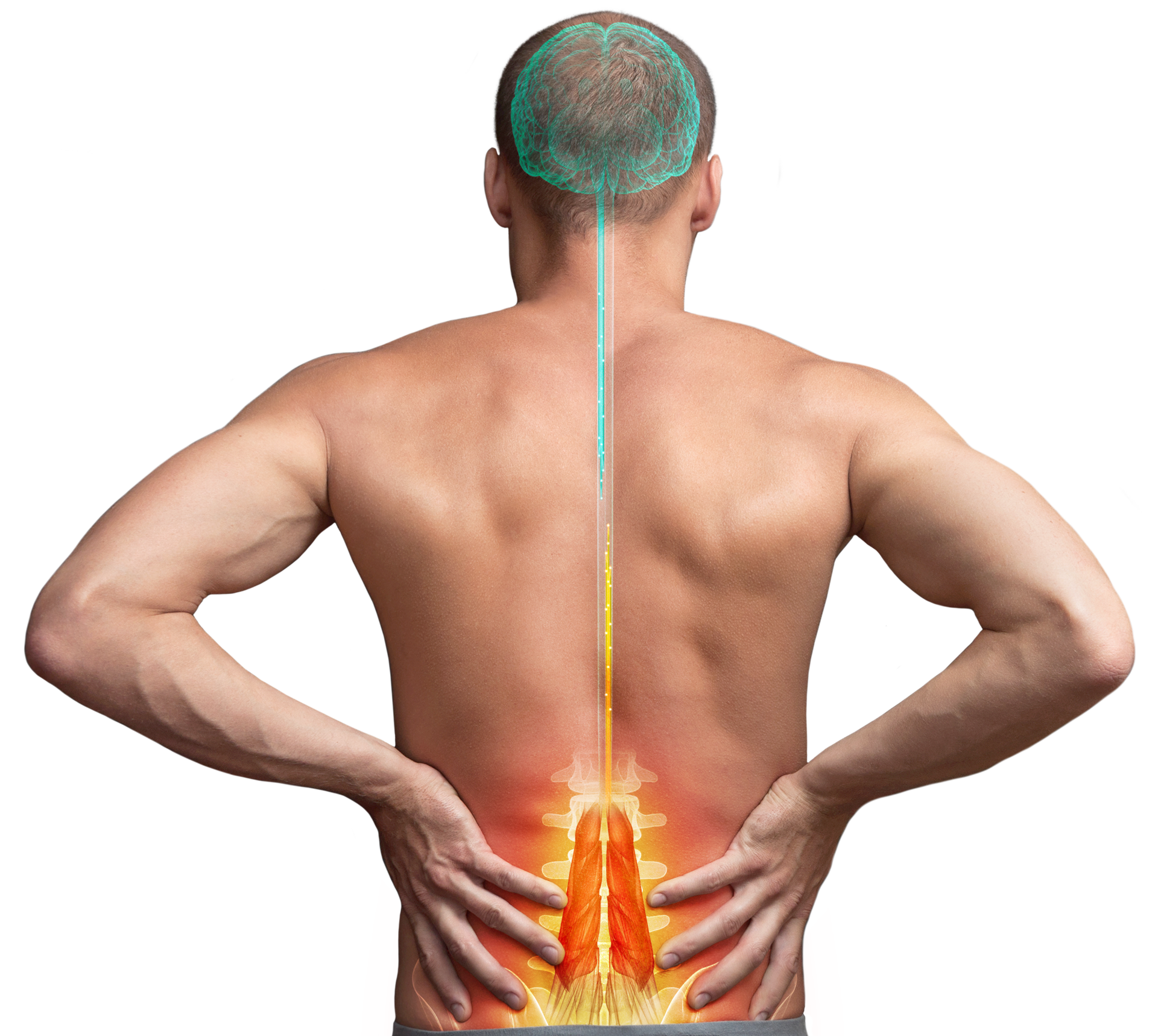A restorative treatment for mechanical CLBP
The information on this page is intended for Physicians.
ReActiv8 is an effective and durable treatment for your patients with mechanical Chronic Low Back Pain (CLBP) and multifidus muscle dysfunction.

What is ReActiv8?
ReActiv8 is designed to treat chronic low back pain in patients diagnosed with dysfunction of the multifidus, which is the primary muscle responsible for lumbar spinal stability. ReActiv8 aims to reduce pain and improve related disability and quality of life. This therapy can provide an effective treatment solution for your patients with mechanical CLBP.
How is it different?
ReActiv8 – a device that uses a restorative treatment approach that targets underlying multifidus muscle dysfunction. Analgesic (or palliative) treatment options have limited effectiveness and durability in patients with mechanical CLBP. [1]rnrnu0026nbsp;rnrn1 – Jensen MP, Brownstone RM. Mechanisms of spinal cord stimulation for the treatment of pain: Still in the dark after 50 years. European Journal of Pain (United Kingdom) 2019;23:652–9.
How does it work?
The ReActiv8 therapy targets the multifidus muscle with electrical pulses delivered through proprietary self-anchoring lead technology placed adjacent to the medial branch of the dorsal ramus. Post procedure, your patient conducts their own at-home therapy twice daily for 30 minutes per session.
Compelling Patient Outcomes
ReActiv8-B clinical trial patient outcomes after three years.
The ReActiv8-B Clinical Trial is an international, multi-center, randomized, active-sham controlled blinded trial comparing the ReActiv8 therapy Treatment Group to an active sham Control Group.
Long-Term Treatment Benefits
- ReActiv8® provides an effective, durable, and safe treatment option for carefully selected patients with intractable CLBP and multifidus muscle dysfunction.
- Trajectory and durability of clinical benefits are consistent with restoration of neuromuscular control and muscle rehabilitation.
- Restorative neurostimulation does not appear to be susceptible to loss of
efficacy (i.e., decreasing effectiveness over time). - The safety profile of the therapy remained favorable compared to available implantable neurostimulators for the treatment of other types of back pain.
- An increasing proportion of participants are eliminating or decreasing opioid consumption.
Gilligan C., Volschenk W., Russo M., Green M., Gilmore C., Mehta V., Deckers K., De Smedt K., Latif U., Sayed D., Georgius P., Gentile J., Mitchell B., Langhorst M., Huygen F., Baranidharan G., Patel V., Mironer E., Ross E., Carayannopoulos A., Hayek S., Gulve A., Van Buyten J.-P., Tohmeh A., Fischgrund J., Lad S., Ahadian F., Deer T., Klemme W., Rauck R., Rathmell J., Schwab F., Maislin G., Heemels J.P., Eldabe S. 2022. Three-Year Durability of Restorative Neurostimulation Effectiveness in Patients With Chronic Low Back Pain and Multifidus Muscle Dysfunction.
Neuromodulation 2022; -: 1–11.
PATHOLOGY OVERVIEW
Multifidus Dysfunction: Loss of Neuromuscular Control
Multifidus Dysfunction can result from a loss of neuromuscular control. This can cause a lack of spinal support, leading to uncontrolled loading of spinal joints and discs, resulting in mechanical low back pain.

PROCEDURE OVERVIEW
Innovation Leads to Rehabilitation
ReActiv8 aims to break the cycle of mechanical CLBP through it’s restorative approach. Here’s how.

PATIENT TESTIMONIALS
See the patient's stories firsthand
ReActiv8 implanters and their clinical staff have seen patients’ lives change after treatment with ReActiv8. Watch their stories below about their experience with mechanical CLBP. The following videos contain stories from three of our international patients who experienced remarkable results from the ReActiv8 system. Patients’ stories are theirs only and not indicative of the results for all patients. Patient outcomes will vary.
FAQS
Frequently Asked Questions
ReActiv8 is for patients who have mechanical chronic low back pain, but have not found relief through medical management or physical therapy.
ReActiv8 is indicated as an aid in the management of intractable chronic low back pain associated with multifidus muscle dysfunction, as evidenced by imaging or physiological testing.
ReActiv8 is contraindicated for patients who are/have:
• Unable to operate the system;
• Unsuitable for ReActiv8 implant surgery;
• Current or planned pregnancy;
• Current condition associated with muscle wasting;
• Current neurological disease; or
• A Body Mass Index (BMI) greater than 35.
The multifidus muscle is a small but important muscle that runs along both sides of your lower back. It helps keep your spine stable and supports your core when you move. However, this muscle can sometimes stop working properly and become weak. When this happens, it often goes unnoticed and untreated, which can lead to ongoing lower back pain that is hard to diagnose. When these muscles don’t function properly, it can lead to instability and discomfort in the lower back.
ReActiv8 is reimbursed through the Prescribed List in Australia. Your doctor can provide you with specific item numbers to send to your private health insurer (these fit within the “Pain Management with device” category) to advise you on your insurance coverage.
ReActiv8 and Spinal Cord Stimulation (SCS) are different in almost every way. Most importantly, these therapies are intended for two different groups of people.
Target Patients:
• ReActiv8 addresses patients with back pain caused by muscle and mechanical issues.
• SCS targets patients with nerve-related back pain and pain that radiates down the legs.
How They Work:
• ReActiv8 is designed to restore control of the multifidus muscle leading to reduced pain and improved function.
• SCS reduces the feeling of pain by blocking pain signals.
Treament Schedule:
• ReActiv8 activates the muscle twice a day for 30 minutes each session.
• SCS provides continuous stimulation as needed or 24/7 to manage pain.
Most patients using ReActiv8 experience steady, long-term improvements in pain and function. This has been proven in several clinical studies, including a major trial showing positive results for up to five years. ReActiv8 demonstrated favorable safety profiles compared to other neurostimulators.